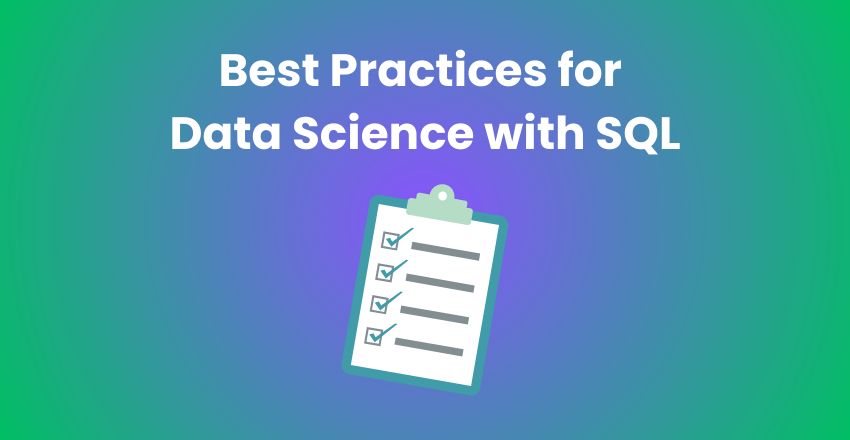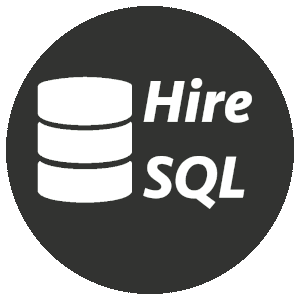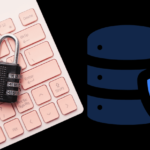
Data Science with SQL leverages SQL’s data analysis capabilities for advanced analytics and machine learning.
In today’s data-driven world, businesses are relying more and more on data science to guide decision-making processes.
Data analysts use a variety of tools and techniques to extract insights from data, and one tool that has become increasingly popular in recent years is SQL. SQL, or Structured Query Language, is a programming language used to manage and manipulate relational databases.
Key Takeaways
- SQL is a powerful tool for data manipulation and analysis.
- SQL analytics allows businesses to efficiently analyze and manipulate large datasets.
- Data insights are critical for making informed business decisions.
- SQL can be leveraged for data science projects in a variety of ways.
- Key SQL techniques for data science include data aggregation, filtering, joining, and subqueries.
- Integrating SQL with data visualization tools can help create impactful visual representations of data insights.
Understanding SQL Analytics
SQL is a powerful tool in the world of analytics. It enables businesses to analyze large datasets efficiently, extracting valuable insights that inform critical decision-making. SQL analytics is the process of using SQL to extract insights from databases, such as identifying trends, detecting anomalies, and predicting future outcomes.
One of the primary advantages of SQL analytics is its ability to work with massive datasets. The language is designed to handle large volumes of structured data and extract meaningful insights in real-time. SQL analytics can also be used to generate reports and perform business intelligence tasks, such as data visualization and data mining.
SQL analytics is particularly useful in e-commerce and financial services, where businesses need to analyze large amounts of data quickly and accurately. It helps organizations to understand their customers better, improve operational efficiency, and stay ahead of the competition.
Understanding SQL Analytics
To understand SQL analytics better, it is essential to know some of the fundamental concepts associated with it.
| SQL Terminology | Description |
|---|---|
| SELECT | Retrieves data from one or more tables. |
| WHERE | Filters data based on specific criteria. |
| GROUP BY | Groups data based on specific columns. |
| JOIN | Combines data from two or more tables based on specific columns. |
These are just a few SQL concepts that are commonly used in analytics. SQL also offers functions, such as aggregation, sorting, and filtering, which are critical in data analysis. An example of an SQL code for data analysis using these concepts would be:
SELECT country, COUNT(*) FROM customers GROUP BY country ORDER BY COUNT(*) DESC;
This SQL code will retrieve the number of customers in each country, group them by country, and then sort the results by the number of customers in descending order.
Understanding SQL analytics and its related concepts is crucial in leveraging SQL for data analysis. It helps businesses to extract valuable insights from large datasets efficiently.
The Power of Data Insights

Data insights are the cornerstone of effective decision-making in any modern business. From customer behavior patterns to business performance metrics, data insights enable businesses to make informed decisions and stay ahead of the competition. As data continues to grow in volume and complexity, the role of SQL in extracting valuable insights cannot be overstated.
With SQL, businesses can efficiently extract data insights from large datasets, enabling them to uncover hidden patterns and surface trends that would otherwise remain undiscovered. The ability to identify and act on these insights can provide businesses with a competitive edge in their respective markets, driving growth and increasing revenue.
SQL’s ability to manipulate, transform, and aggregate data is key to unlocking these insights. With complex queries and subqueries, businesses can efficiently extract relevant information from large datasets, enabling them to make data-driven decisions.
“Data is the new oil, and insights are the new gasoline”
By utilizing SQL in data science workflows, businesses can also ensure the accuracy and consistency of their data, mitigating the risk of errors and inconsistencies that could lead to incorrect insights and ultimately poor decisions.
The ability to extract, analyze, and visualize data insights is critical to staying competitive in today’s data-driven landscape. With SQL, businesses can efficiently and effectively unlock the full potential of their data, driving growth and success.
Leveraging SQL in Data Science

Incorporating SQL into data science workflows presents numerous advantages. Through SQL, developers can clean, transform, and manipulate large datasets for predictive modeling and machine learning. The application of SQL in data science has streamlined the process of developing models that can be trained on datasets while also providing an efficient way to extract insights from data.
One of the primary benefits of including SQL in data science workflows is the ability to work with unstructured data. In contrast to structured data, which is typically formatted in a tabular form, unstructured data comes in various forms that require data cleaning and transformation before being usable. SQL provides a convenient and efficient way of carrying out this task, making it easier for developers to extract insights from data.
In addition, SQL provides a wide range of techniques that allow developers to aggregate, filter, join, and perform subqueries on datasets. These features help data scientists to extract and uncover insights that would be difficult to identify otherwise. For instance, applying SQL to filter a dataset by specific attributes can help unearth patterns and trends that would be otherwise hidden.
Overall, leveraging SQL in data science is crucial for any developer looking to derive valuable insights from data. Combining SQL with predictive modeling and data visualization tools makes it possible to uncover insights that would be otherwise challenging to identify. It provides a convenient way of performing data cleaning, transformation, and manipulation, streamlining the data science process and making it possible to develop sophisticated models quickly and efficiently.
If you’d like to see SQL in action, consider the following example:
SELECT COUNT(*) FROM customers WHERE age BETWEEN 18 AND 35
The above SQL query returns the number of customers whose ages fall between 18 and 35. It demonstrates how SQL can be used to filter and extract specific data points from datasets.
Key SQL Techniques for Data Science
In data science, SQL is a powerful tool used for managing and manipulating large datasets. Here are some essential SQL techniques used in data science:
Data Aggregation
Data aggregation involves summarizing data by grouping it based on certain criteria. This is useful when dealing with large datasets, as it can help reveal patterns and trends in the data. An example of data aggregation would be calculating the total sales for each region in a company.
Filtering
Filtering is the process of selecting a subset of data that meets specific conditions. SQL provides several ways to filter data, such as using the WHERE and HAVING clauses. An example of filtering would be selecting all customers who have made a purchase in the last 30 days.
Joining
Joining is the process of combining two or more tables based on a common column. This is useful when dealing with data that is spread across multiple tables. SQL provides several types of joins, such as INNER JOIN and LEFT JOIN. An example of joining would be combining a customer table and a sales table to analyze customer behavior.
Subqueries
Subqueries are queries that are nested inside another query. They are useful for performing complex calculations or filtering. An example of a subquery would be selecting all customers who made a purchase in the last 30 days and are located in a specific region.
Example of a SQL code:
SELECT customer_name, COUNT(order_id) AS total_orders FROM customers JOIN orders ON customers.customer_id = orders.customer_id WHERE order_date >= '2023-01-01' GROUP BY customer_name ORDER BY total_orders DESC;
By mastering these key SQL techniques, data scientists can efficiently manage and analyze large datasets, extracting valuable insights for businesses to make informed decisions.
Integrating SQL with Data Visualization

One of the most significant advantages of using SQL for data science is the ease with which it can be integrated with data visualization tools. Data visualization allows for a more comprehensive understanding of the insights derived from data analysis, thus enabling businesses to make informed decisions.
By using SQL queries to extract and manipulate data, it is possible to create visually appealing representations of the data in various formats such as charts, graphs, and tables.
Visualization tools like Tableau, PowerBI, and QlikView allow for the creation of interactive dashboards and reports, making it easier for data analysts and business stakeholders to explore trends and patterns in data. By combining the power of SQL queries with the capabilities of visualization tools, businesses can gain deeper insights from their data and make more informed decisions.
For example, a company may use SQL to analyze customer behavior and identify patterns in purchasing habits. Using this information, they can create a visualization that shows the most popular products or services, the regions where they are most in demand, and the customer profiles that are most likely to purchase them. This visual representation of the data helps businesses to make strategic decisions, such as which products to promote, which regions to target, and how to optimize pricing strategies.
Overall, integrating SQL with data visualization is an excellent way to make sense of data insights and communicate them effectively to stakeholders. By combining the analytical power of SQL with the visual clarity of data visualization, businesses can gain a deeper understanding of their data and make more informed decisions.
Challenges in SQL-based Data Science
While SQL plays a critical role in data science, it is not without its challenges. Some of the most common challenges data scientists encounter include:
- Performance issues: Working with large datasets and complex queries can impact the performance of SQL-based data science projects. To overcome this challenge, you can optimize your queries, normalize your database, and use indexing to improve performance.
- Data quality: The quality of data in your database can significantly affect the accuracy of your analysis. Therefore, data cleaning and validation should be an integral part of your data science workflow.
- Data integration: In some cases, data may be spread across multiple databases or sources, making integration challenging. To address this challenge, you can use ETL tools to extract, transform, and load data from different sources into a single database.
- Data security: Protecting sensitive data is critical in data science. Ensure that access to your database is restricted, and implement security measures such as encryption and access controls.
By addressing these challenges, you can ensure that your SQL-based data science projects are efficient, accurate, and secure.
Best Practices for Data Science with SQL

SQL has become an invaluable tool for data scientists across industries. However, to ensure efficiency and accuracy, it is crucial to follow best practices when incorporating SQL into your data science projects. Here are some tips:
1. Always check for data quality and completeness
Before proceeding with any analysis, it is essential to conduct a thorough data quality check. Missing values, duplicate entries, and inconsistent data can significantly impact your results. Therefore, it is crucial to remove or impute missing data and eliminate duplicates. Additionally, it is advisable to validate the accuracy of your data by comparing it with other reliable sources.
2. Plan your SQL queries beforehand
Planning your queries beforehand can save you time and effort while ensuring that you achieve your desired results. Take the time to understand your data and the insights you want to extract, then build your queries accordingly. Moreover, it is essential to use efficient and optimized queries to minimize computation time and improve performance.
3. Use indexing to enhance query performance
Indexing can significantly improve the performance of your SQL queries by reducing the time needed to search and retrieve data. It is advisable to use indexing for columns that are frequently used for filtering, grouping, and sorting data. However, indexing should be used with caution, as too many indexes can slow down write operations and increase storage requirements.
4. Test your queries before incorporating them into your workflow
Testing your queries before using them in your workflow can help you catch errors and ensure that your results are accurate. Conducting tests on a small sample of data can help you identify potential issues and refine your queries before using them on more significant datasets.
5. Keep your queries simple and easy to understand
Simple and easy-to-understand queries are easier to maintain and enhance. Avoid using complex queries that are difficult to debug and update. Moreover, it is essential to document your queries and code to ensure that other team members can understand and replicate your work.
6. Regularly optimize your queries and database
Regular optimization of your queries and database can help you improve performance and reduce computation time. It is advisable to monitor your query performance regularly and optimize your database by removing old or unused data, defragmenting indexes, and optimizing query plans.
Incorporating these best practices can help you leverage the power of SQL in data science and achieve accurate and meaningful results. By following these guidelines, you can improve your workflow, minimize errors, and increase efficiency.
Wrapping Up – Data Science with SQL

As businesses continue to expand their operations, the importance of data analysis and insights cannot be overstated. Incorporating SQL into data science workflows can help organizations derive meaningful insights from large datasets efficiently.
The use of SQL analytics allows businesses to analyze data sets with ease and provides better visibility into their operations. With SQL science, data cleaning, transformation, and manipulation can occur seamlessly, enabling predictive modeling and machine learning.
Key SQL techniques such as data aggregation, filtering, joining, and subqueries form the backbone of data science. By applying these techniques, businesses can extract valuable insights that can help in making informed decisions.
Integrating SQL with data visualization tools enhances the impact of data insights by enabling the creation of visual representations. As HireSQL’s dedicated SQL developers continue to offer solutions that utilize the best practices for SQL-based data science, the potential for businesses to benefit from the technique is vast.
While there may be challenges in implementing SQL-based data science, proper preparation and planning can lead to successful project completion. The best practices presented in this article can help ensure efficiency and accuracy in using SQL in data science workflows.
Overall, data science with SQL presents a powerful tool in gaining data insights, and businesses should consider its adoption. At HireSQL, we provide dedicated SQL developers who can help businesses take advantage of the technique. Contact us today to learn more.
FAQ – Data Science with SQL

Q: What is data science with SQL?
A: Data science with SQL refers to the practice of using SQL (Structured Query Language) to extract, manipulate, and analyze data in order to derive meaningful insights and make informed business decisions.
Q: How does SQL analytics work?
A: SQL analytics involves using SQL queries to explore and analyze large datasets efficiently. By applying various SQL techniques, businesses can extract valuable information and uncover patterns, trends, and correlations within the data.
Q: Why are data insights important in business?
A: Data insights play a crucial role in making informed business decisions. By analyzing data, businesses can identify market trends, customer behaviors, and performance indicators, which can guide strategic planning and drive growth.
Q: How does SQL assist in data science?
A: SQL is leveraged in data science for tasks such as data cleaning, transformation, and manipulation. It enables data scientists to retrieve, filter, aggregate, and join datasets, facilitating advanced analytics, predictive modeling, and machine learning.
Q: What are key SQL techniques used in data science?
A: Key SQL techniques used in data science include data aggregation, filtering, joining, and subqueries. These techniques allow data scientists to extract and manipulate specific subsets of data, enabling deeper analysis and insights.
Q: How can SQL be integrated with data visualization tools?
A: SQL can be integrated with data visualization tools to create impactful visual representations of data insights. By connecting SQL queries with these tools, data scientists can generate charts, graphs, and interactive visuals that enhance data understanding and communication.
Q: What are common challenges in SQL-based data science projects?
A: Common challenges in SQL-based data science projects include handling large datasets efficiently, optimizing query performance, dealing with missing or inconsistent data, and ensuring data integrity. Solutions involve optimizing queries, data preprocessing techniques, and robust quality control measures.
Q: What are best practices for SQL-based data science?
A: Best practices for SQL-based data science include writing efficient and well-structured queries, using proper indexing techniques, documenting data sources and transformations, validating results, and regularly testing and optimizing SQL code.
James is a highly acclaimed author renowned for his extensive experience in the realm of data development and architecture, offering valuable insights to the data industry through his compelling literary works. Residing in the charming city of Oxford, he embarked on an illustrious academic journey at Oxford University, where he delved into the intricate world of computer science. This foundation served as the catalyst for his exceptional career.
After completing his studies, James embarked on a professional path that led him to renowned technology giants. He first honed his skills as a data developer at Microsoft, where he showcased his prowess in designing and implementing robust data solutions. His innovative contributions played a pivotal role in enhancing data management processes, solidifying his reputation as a meticulous and forward-thinking professional.
Seeking new challenges and broader horizons, James embarked on a transformative journey at Amazon Web Services (AWS). In this influential position, he leveraged his profound understanding of data architecture to shape cutting-edge solutions for clients. His leadership and technical acumen enabled businesses to harness the power of cloud computing and revolutionize their data management practices, further solidifying his status as an industry authority.







